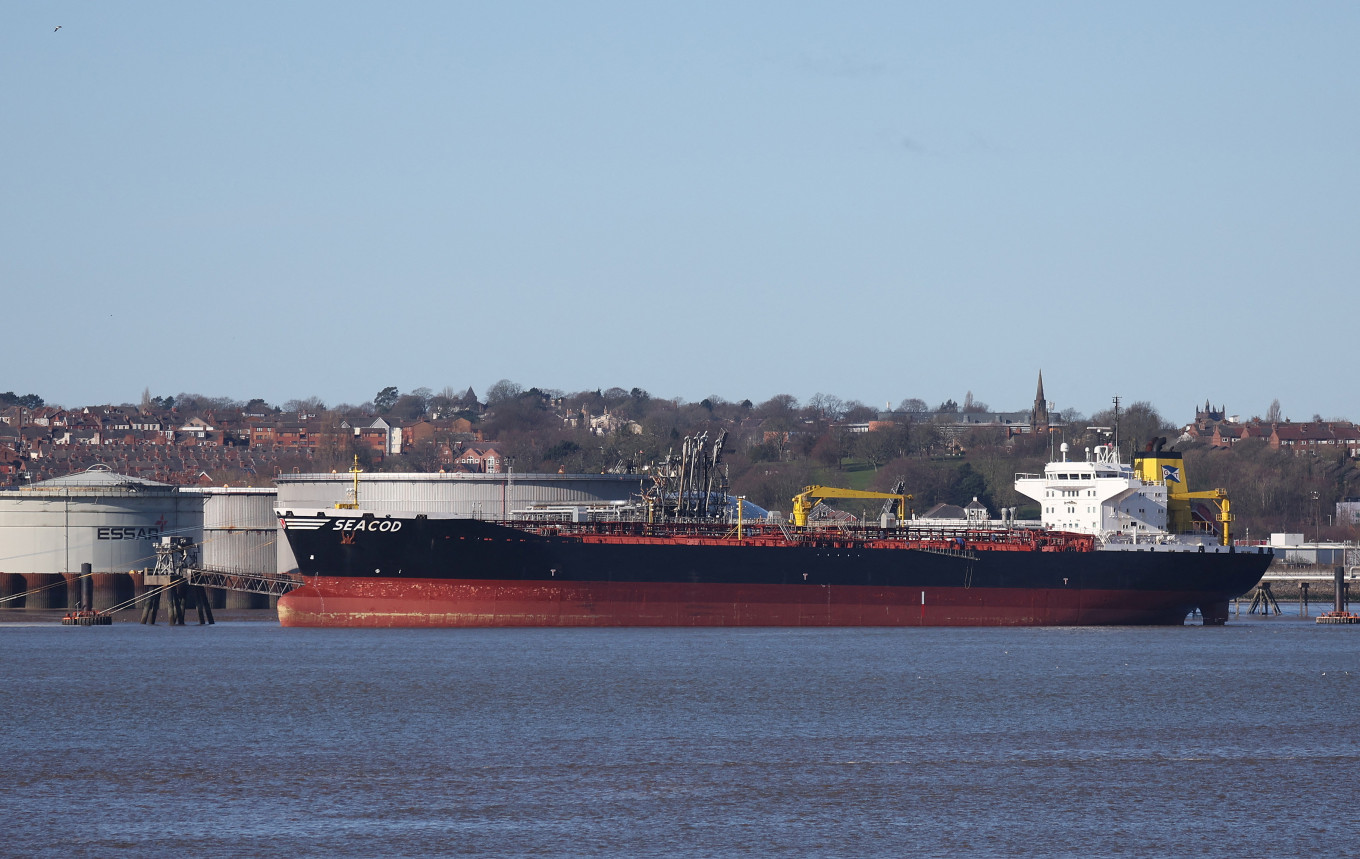Popular Reads
Top Results
Can't find what you're looking for?
View all search resultsPopular Reads
Top Results
Can't find what you're looking for?
View all search resultsOil surges, shares and euro hit the skids
Oil prices soared and shares sank in hectic trading on Monday as the euro extended its slide and commodities of all stripes were on the rise, with gold almost back at $2,000 an ounce.
Change text size
Gift Premium Articles
to Anyone
O
il prices soared and shares sank in hectic trading on Monday as the risk of a US and European ban on Russian product and delays in Iranian talks triggered what was shaping up as a major stagflationary shock for world markets.
The euro extended its slide, hitting parity against the safe haven Swiss franc, and commodities of all stripes were on the rise as the Russian-Ukraine conflict showed no sign of cooling.
Russia calls the campaign it launched on Feb. 24 a "special military operation", saying it has no plans to occupy Ukraine.
Having surged more than 10 percent in wild early action, Brent was last quoted $7.90 higher at $126.01, while US crude rose $6.67 to $122.35.
That jump will act as a tax on consumers and the potential blow to global economic growth saw S&P 500 stock futures drop 1.5 percent, while Nasdaq futures shed 1.9 percent. US 10-year bond yields also dropped to their lowest since early January.
EUROSTOXX 50 futures dived 3 percent and FTSE futures 2.5 percent.
Japan's Nikkei sank 3.2 percent, while MSCI's broadest index of Asia-Pacific shares outside Japan lost 1.6 percent. Chinese blue chips shed 0.8 percent amid a sea of red across Asian markets.
Having climbed 21 percent last week, Brent crude was further energized by the risk of a ban of Russian oil by the United States and Europe.
"If the West cuts off most of Russia's energy exports it would be a major shock to global markets," said BofA chief economist Ethan Harris.
He estimates the loss of Russia's 5 million barrels could see oil prices double to $200 a barrel and lower economic growth globally.
And it is not just oil, with commodity prices having their strongest start to any year since 1915, says BofA. Among the many movers last week, nickel rose 19 percent, aluminum 15 percent, zinc 12 percent, and copper 8 percent, while wheat futures surged 60 percent and corn 15 percent.
That will only add to the global inflationary pulse with US consumer price data this week expected to show annual growth at a stratospheric 7.9 percent, and the core measure at 6.4 percent.
All of which complicates the policy picture for the European Central Bank when it meets this week.
"Given the potential for stagflation is very real, the ECB is likely to maintain maximum flexibility with its asset purchase program at 20 billion euros through Q2 and potentially beyond, thus effectively pushing out the timing of rate hikes," said Tapas Strickland, an economist at NAB.
"Higher CPI forecasts, though, mean rate hikes will be needed on the horizon."
The near-term prospect of a more dovish ECB combined with safe-haven flows to drive German 10-year bond yields down a huge 32 basis points last week. US 10-year yields were down at 1.69 percent, having already dropped 23 basis points last week.
Fed fund futures were also gaining as the market priced in a slower pace of rate rises from the Federal Reserve this year, though a March hike is still seen as a done deal.
With the outlook for European growth darkening, the single currency took a beating and fell 3 percent last week to its lowest since mid-2020. It was last down 0.8 percent at $1.0834 and in danger of testing its 2020 trough around $1.0635.
The euro was also tumbling against the Swiss franc to break under 1 for the first time since early 2015.
The dollar was broadly firmer, supported in part by a strong payrolls report which only reaffirmed market expectations for a Fed hike this month. The dollar index was last at 99.134, having climbed 2.3 percent last week.
"Events in the Ukraine are increasingly overwhelming the euro," said Richard Franulovich, head of FX strategy a Westpac.
"With safe-haven flows likely to continue for some time yet and Fed officials eager to press on with their policy normalization plans, 100+ for (the dollar index) is just a matter of time."
Gold benefited from its status as one of the oldest of safe harbors and was last up 1.1 percent at $1,991 an ounce.










